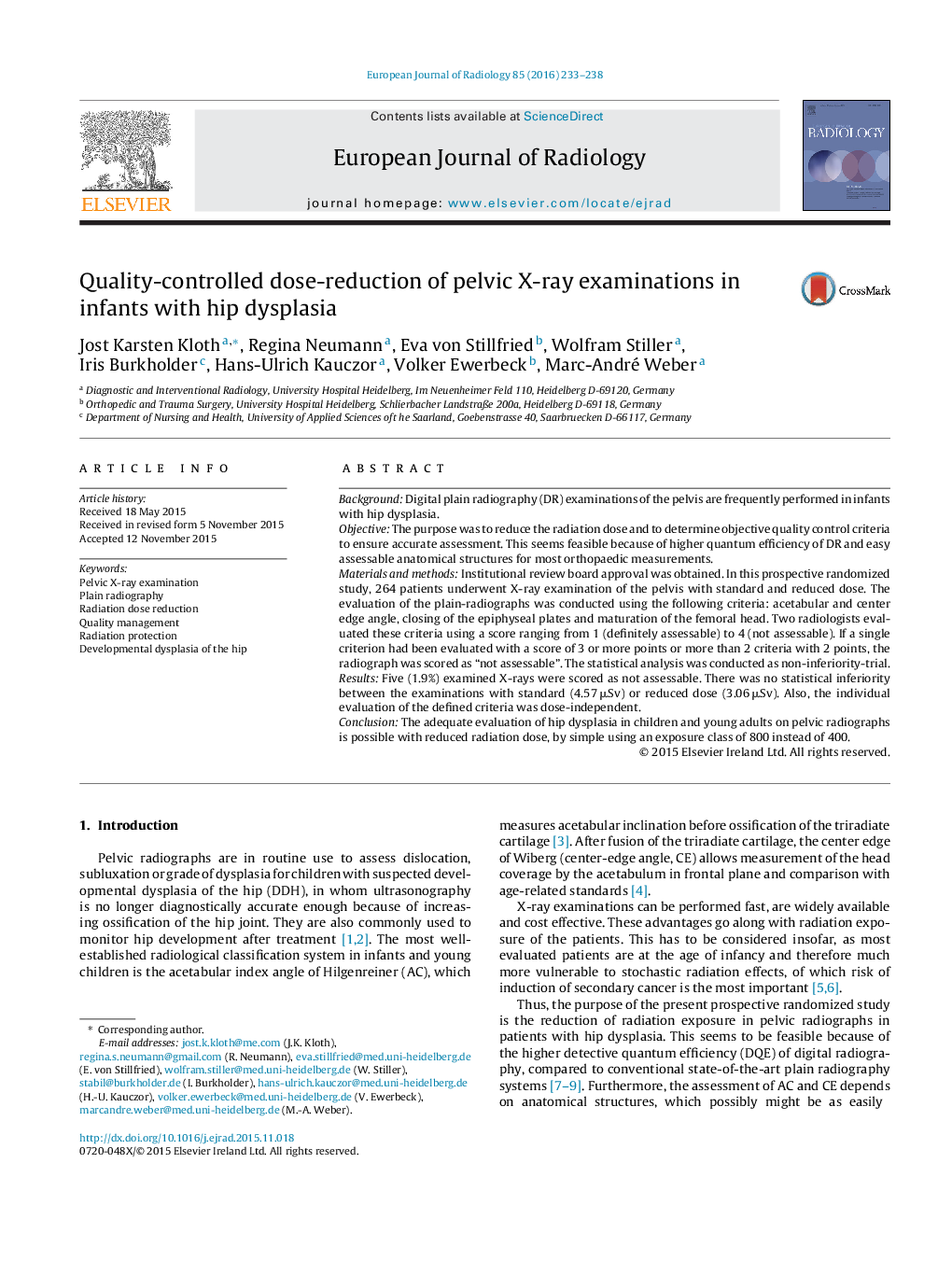| کد مقاله | کد نشریه | سال انتشار | مقاله انگلیسی | نسخه تمام متن |
|---|---|---|---|---|
| 6243202 | 1609746 | 2016 | 6 صفحه PDF | دانلود رایگان |
- Pelvic radiographs of infants with hip dysplasia with speed class 400 and 800 were compared.
- Radiographs with reduced dose (800) were not inferior to those with standard dose (400).
- We recommend speed class 800 as new reference parameter in these examinations.
BackgroundDigital plain radiography (DR) examinations of the pelvis are frequently performed in infants with hip dysplasia.ObjectiveThe purpose was to reduce the radiation dose and to determine objective quality control criteria to ensure accurate assessment. This seems feasible because of higher quantum efficiency of DR and easy assessable anatomical structures for most orthopaedic measurements.Materials and methodsInstitutional review board approval was obtained. In this prospective randomized study, 264 patients underwent X-ray examination of the pelvis with standard and reduced dose. The evaluation of the plain-radiographs was conducted using the following criteria: acetabular and center edge angle, closing of the epiphyseal plates and maturation of the femoral head. Two radiologists evaluated these criteria using a score ranging from 1 (definitely assessable) to 4 (not assessable). If a single criterion had been evaluated with a score of 3 or more points or more than 2 criteria with 2 points, the radiograph was scored as “not assessable”. The statistical analysis was conducted as non-inferiority-trial.ResultsFive (1.9%) examined X-rays were scored as not assessable. There was no statistical inferiority between the examinations with standard (4.57 μSv) or reduced dose (3.06 μSv). Also, the individual evaluation of the defined criteria was dose-independent.ConclusionThe adequate evaluation of hip dysplasia in children and young adults on pelvic radiographs is possible with reduced radiation dose, by simple using an exposure class of 800 instead of 400.
Journal: European Journal of Radiology - Volume 85, Issue 1, January 2016, Pages 233-238
